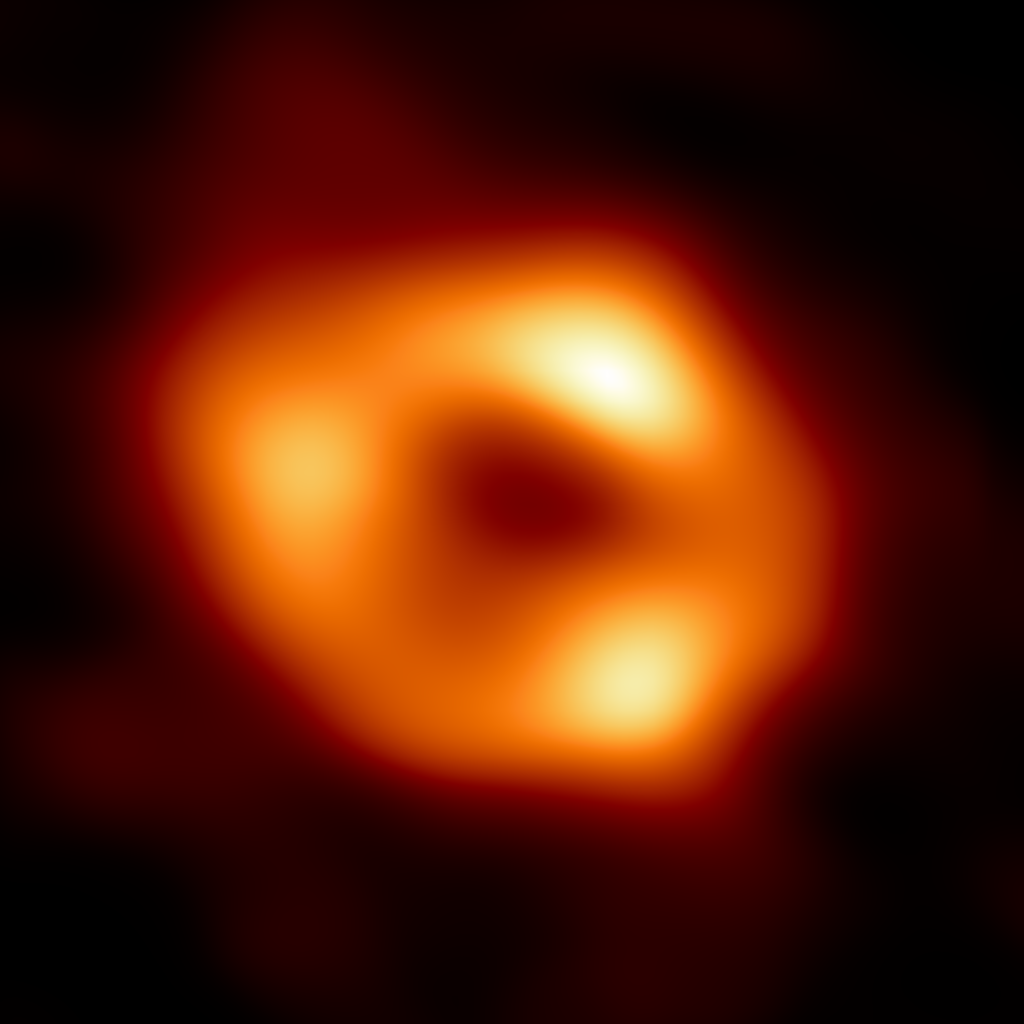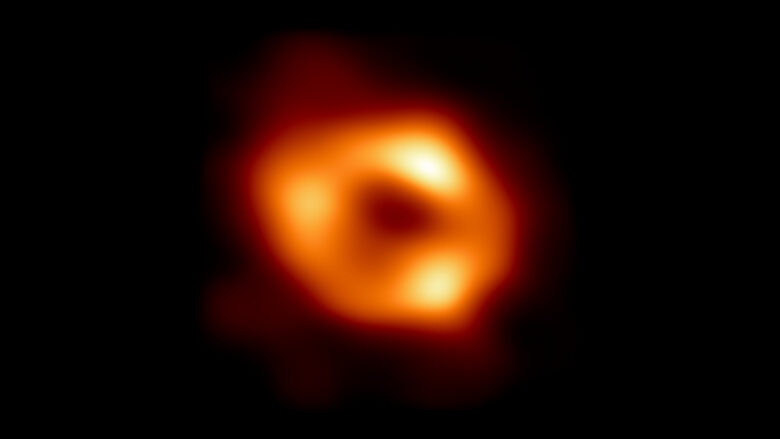The brilliant Event Horizon Telescope (EHT) team has achieved brilliance again, bringing us the first image of the black hole at the center of our very own Milky Way galaxy – Sagittarius A*. While much closer to Earth, being that it is in our own galaxy some 27,000 light years away, this black hole was much harder to observe than the supermassive black hole observed in 2019 – M87. Sagittarius A* is 1000x smaller and less massive than M87 making it akin to “observing a doughnut on the Moon” (mmm…Moon doughnuts.) Due to its smaller size, gas also orbits much faster around it, changing the brightness and patterns so quickly that researcher Chi-kwan Chan likened observing it to “trying to take a clear picture of a puppy quickly chasing its tail.”

Both observed black holes look fairly similar despite being from different galaxies and having very different masses. As theoretical astrophysicist Sera Markoff says, “This tells us that General Relativity governs these objects up close, and any differences we see further away must be due to differences in the material that surrounds the black holes.” Now that we have observations of both big (M87) and small (Sagittarius A*) black holes, we will be able to do more testing to understand how gravity and gas behaves around them – thought to play a key role in shaping and forming galaxies!
This collaborative effort requires the partnership of 300 researchers from 80 institutes across the world, and uses supercomputers to combine and analyze data in unprecedented ways. The Event Horizon Telescope – eight radio telescopes connected across the globe that effectively create one “Earth-sized” telescope – is soon adding more telescopes into the mix. With Webb coming online shortly, and EHT continuing to enhance, we are entering a new dawn of observations that will forever change our understanding of the Universe. Good times! If you want to learn more about the brain power behind this incredible initiative, I recommend watching Black Holes: The Edge of All We Know on Netflix.



